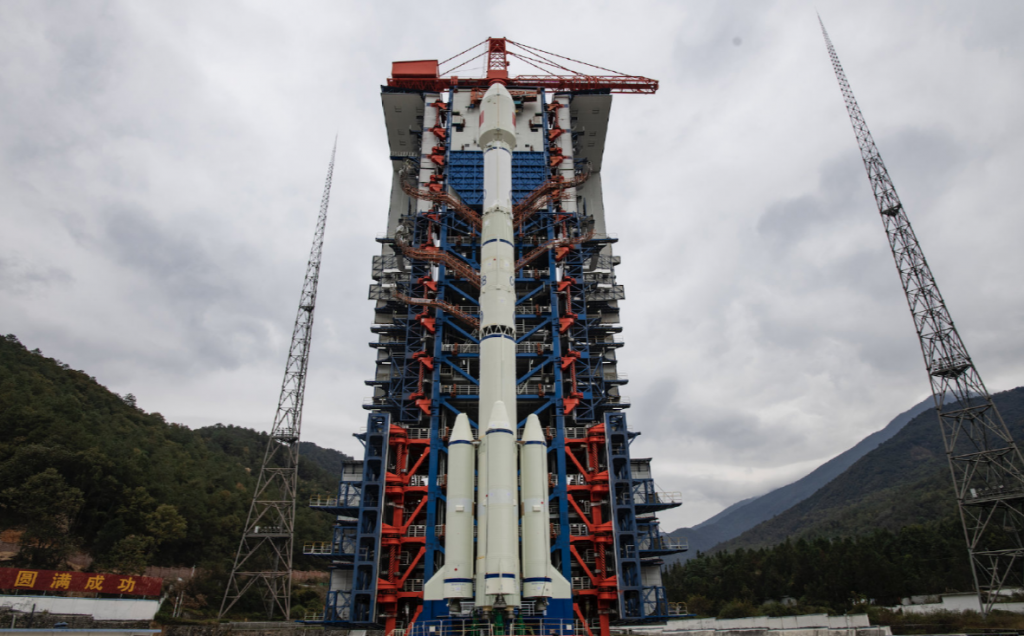3-9-21 China and Russia have signed a memorandum of understanding (MOU) on joint construction of an international lunar research station, from the China National Space Administration (CNSA) on Tuesday.

3-9-21 China and Russia have signed a memorandum of understanding (MOU) on joint construction of an international lunar research station, from the China National Space Administration (CNSA) on Tuesday.


2-12-21 Russian Prime Minister Mikhail Mishustin has instructed Roscosmos, Russia’s state space agency, to complete a Memorandum of Understanding with China confirming cooperation on the creation of an International Scientific Lunar Station, Russian media reported on Friday.

Tianwen-1, China’s first Mars probe, successfully reached the Red Planet on Wednesday at around 7:52 pm, homing in on the Earth’s planetary neighbor after an epic seven-month journey of nearly 500 million kilometers.
After a 15-minute firing of its 3,000-newton thrust engine, the spacecraft reached an elliptical Mars orbit at around 400 kilometers from the planet, according to a statement China’s National Space Administration (CNSA) provided to the Global Times on Wednesday.
Tianwen-1 circuitous flight has seen the spacecraft travel some 475 million kilometers, taking it some 192 million kilometers from Earth, with all systems in good condition, CNSA said. The communication time delay between the probe and Earth is about 10.7 minutes.
It will carry out several orbital course corrections before finally selecting a landing spot and touching down, which is scheduled to happen between May and June.


China’s Tianwen-1 Mars probe sent back its first image of Mars. It has travelled about 465 million kilometers, reaching more than 184 million kilometers from earth and 1.1 million kilometers from Mars as of 8 pm Friday.


2-4-21 China has successfully sent its communication experimental satellite-6 into preset orbit by a Long March-3B carrier rocket at 23:36 from the Xichang Satellite Launch Center in Sichuan Province.


1-14-21, National Astronomical Observatory Beijing-Arizona BASS survey team and the Dark Energy Spectral Survey DESI International Collaboration Project team jointly released the latest giant two-dimensional sky map of the universe. This is the largest cosmic sky map obtained by human measurement so far. 200 researchers from all over the world have spent 6 years on joint observation and data analysis, covering 20,000 square degrees of the sky, which is about half the area of the whole celestial sphere, accommodating 10 trillion digital pixels and containing 2 billion celestial objects.

China launched Gaofen-14, an optical satellite, onboard the Long March 3B carrier rocket on Sunday 11:58 am from Xichang Satellite Launch Center in SW China’s Sichuan Province.


Cosmochemist and geochemist Ouyang Ziyuan 欧阳自远 from the Chinese Academy of Sciences who is now in charge of the Chinese Lunar Exploration Program has already stated on many occasions that one of the main goals of the program would be the mining of helium-3, from which operation “each year, three space shuttle missions could bring enough fuel for all human beings across the world.”
The Chang’e-5 probe, comprising an orbiter, a lander, an ascender and a returner, was launched on Nov. 24, and its lander-ascender combination touched down on the north of the Mons Rumker in Oceanus Procellarum, also known as the Ocean of Storms, on the near side of the moon on Dec. 1. After the samples were collected and sealed, the ascender of Chang’e-5 took off from the lunar surface on Dec. 3. Next, the orbiter-returner will separate from the ascender, and wait for the right time to return to Earth.
12-8-20 The ascender of China’s Chang’e-5 lunar probe carried out deorbiting on Tuesday at 6:59 am and landed on the preset landing area on the moon’s surface at 7:30 am in a controlled manner.
12-16-20 ChangE5 orbiter-returner combo successfully conducted second course correction at the moon-Earth transfer orbit on Wed 9:15 am.
12-17-20 Carrying around 2 kilograms of lunar samples, China’s Change5 lunar probe safely landed in the designated area in North China at 1:59 am on Thursday, bringing the craft’s epic round trip between Earth and Moon.
Chang’e-7 and -8 missions will involve inviting relevant countries and agencies to work together to study the feasibility of building a permanent moon base.
The CNSA and scientists are mulling over launching Chang’e-6 sample return mission during China’s 14th Five-Year Plan (2021-25); the landing site could be the lunar south pole or far side of the Earth’s natural satellite.

